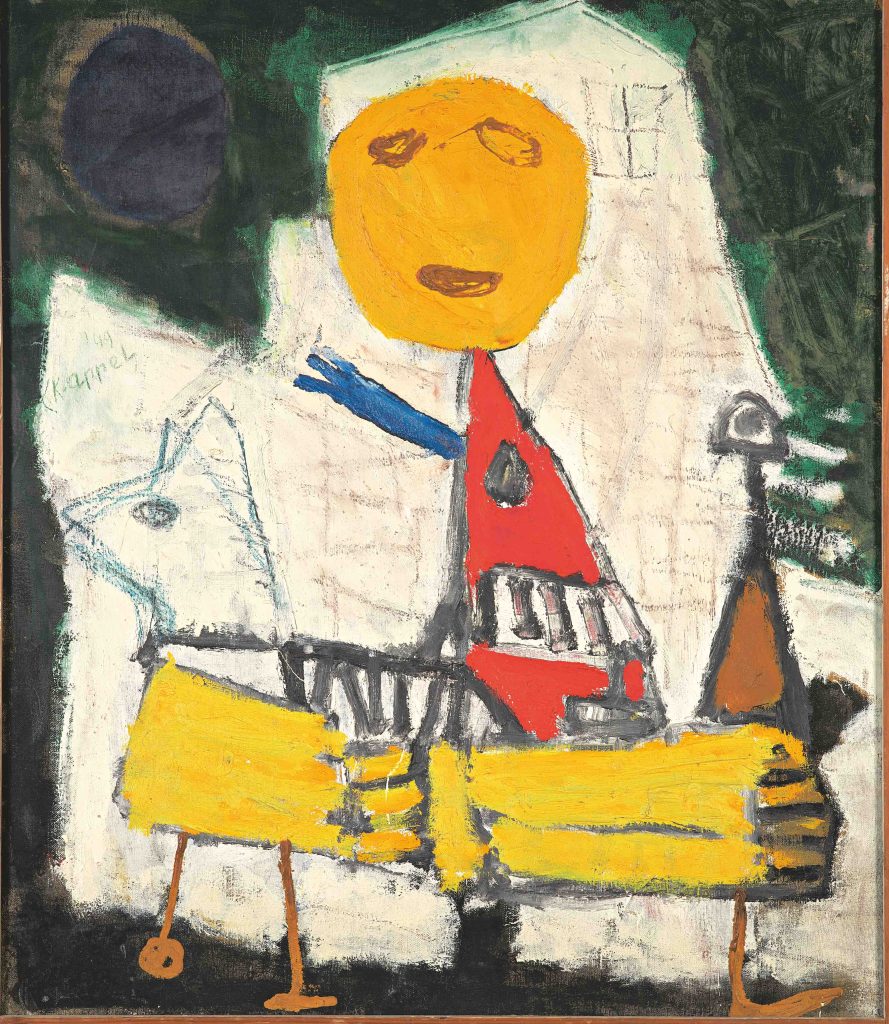An animal, a night, a cry
Dutch Cobra artists from the collection
An animal, a night, a cry is an exhibition of works created by Dutch members of the Cobra movement from the late 1940s to the mid-1950s. The exhibits are either from the permanent collection of the Cobra Museum or are works on long-term loan to the museum.

Following the repression and deprivations of the Second World War, the Dutch Cobra artists craved artistic and intellectual freedom, spontaneity, and novelty. They sought inspiration in forms of art foreign to the academic tradition, such as children’s drawings, folk art and outsider art, and they experimented with new materials and forms. Although they did not aspire to a single communal style, their pictures amounted to a distinctive Cobra world full of colourful birds, fabulous beings, people and heavenly bodies. Constant formulated it as follows: ‘A painting is not a structure of colours and lines, but an animal, a night, a cry, a man, or all of these together.’
The name of the Cobra movement (1948-1951) is composed of the initials of the cities of Copenhagen, Brussels and Amsterdam, where many of the artists lived. The Dutch members included Karel Appel, Corneille, Constant, Jan Nieuwenhuijs, Anton Rooskens, Theo Wolvecamp, Eugène Brands and the poet-painter Lucebert. These young artists were keen to interact and exchange ideas with kindred spirits outside the Netherlands. When Appel, Corneille and Constant visited Denmark in 1948, they felt an immediate kinship with the mentality of Danish artists and a shared interest in experimentation, folk art, and spontaneous artistic expression. Work by these Danish artists is currently on show on the first floor of the museum. But all was not unanimity within the movement. There were also differences and conflicts of opinion between the members. Despite these, Cobra’s ideas and vitality would continue to reverberate through the art world for a long time to come.
